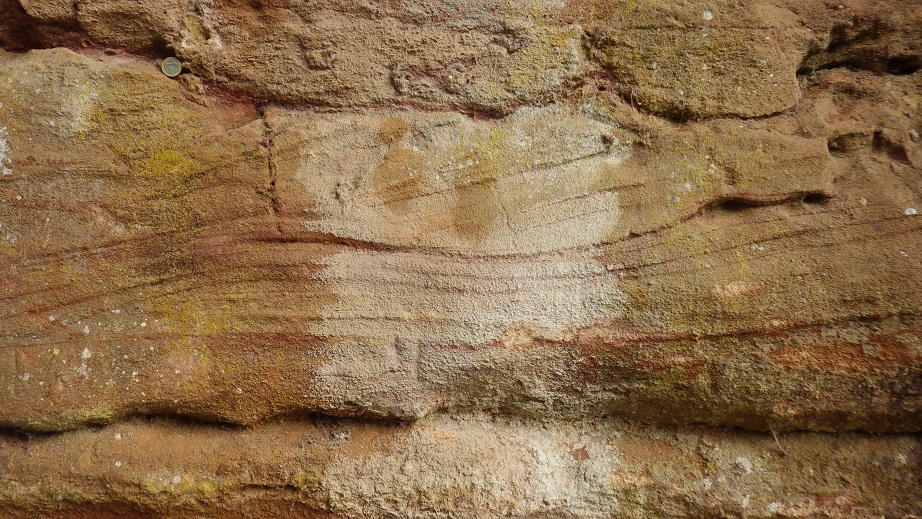
Sedimentary deposits can have different pattern depending on the hydraulic conditions of the fluvial process. Especially interesting is flow conditions where the Froude number is around unity. This can give a wavy pattern if a stationary in-phase wave is present. If the wave is unstable, a distorted patterns may form.

The current case is a test of a multi-layer bed sedimentation algorithm. The water is flowing from left to right in a straight flume with a sediment bed. More sediments are added to the inflow section than the capacity of the flume. This causes sediment deposition over time. The pattern of the sediment deposits are given in the figure and videos. Five sediment sizes are used.

The figure above shows a detail of the layer-forming process. A smaller wave is moving along the bed forming one layer of fine/coarse particles. In the image above, the yellow arrow points to the front of the wave. The sediment layers are shown in black and white, where black are coarser sediments and white are finer sediments. The arrows shows the direction of the water velocity and the colours shows the turbulent kinetic energy, where red is a high value and blue is a low value. Since the bed shear stress is proportional to the kinetic energy close to the bed, the figure shows that there are high shear stresses on top of the small bed wave and low shear stress on its lee side.
The figure and the videos below belong to the following article:
Olsen, N. R. B. (2022) Explaining the formation of sedimentary structures under antidunes using a 2D width-averaged numerical model. Norwegian Journal of Geology. doi: 10.17850/njg102-3-2.
The two videos below are shown 3x faster than the real time.
Video 8, Formation of downstream dipping bedding
The video below is shown with half the speed of real-time.
Video 9, upstream-moving surface wave
The hydraulic conditions are taken from the following studies:
Olsen, N. R. B. (2017) Numerical modelling of downstream-migrating antidunes, Earth Surface Processes and Landforms. Vol 42, pp 2393–2401. doi:10.1002/esp.4193.
Olsen, N. R. B. (2016), Numerical modelling of antidune formation and propagation, International Symposium on River Sedimentation, Stuttgart, Germany.
This page was last updated: 31. January 2023